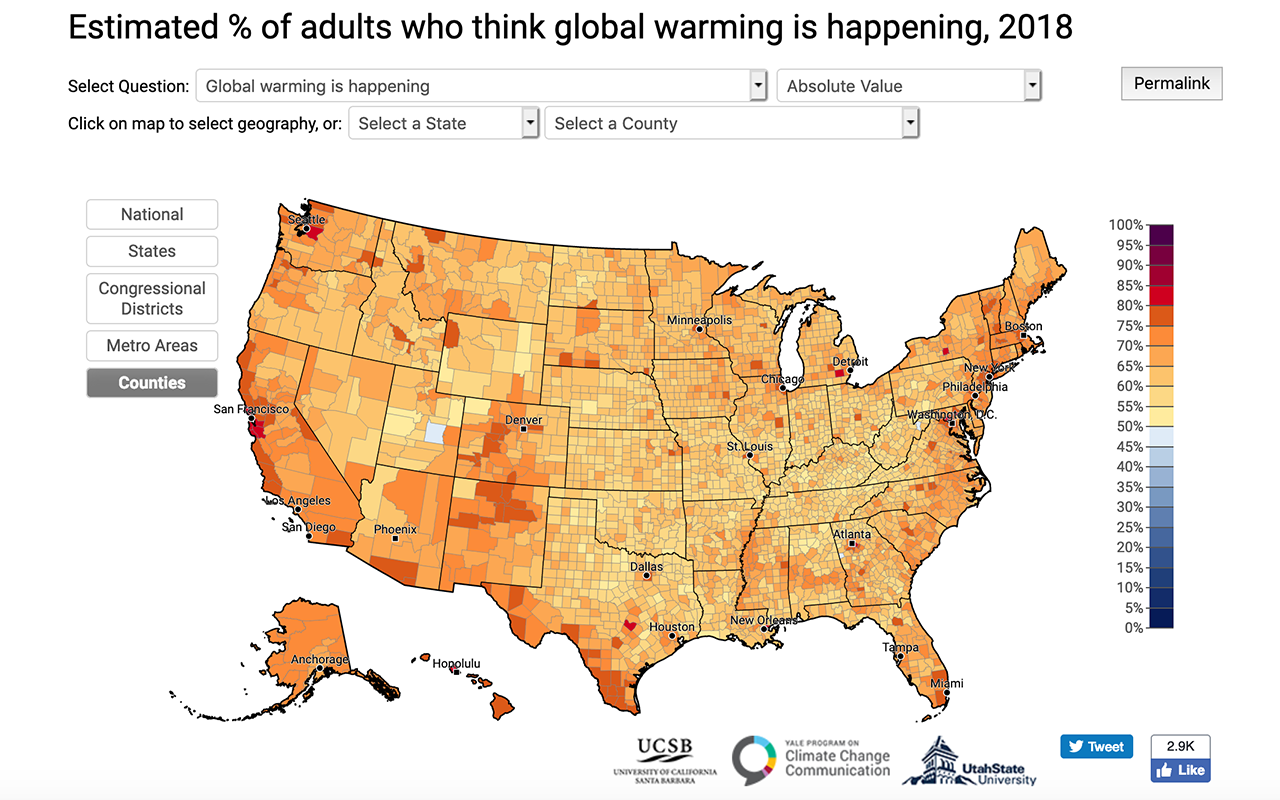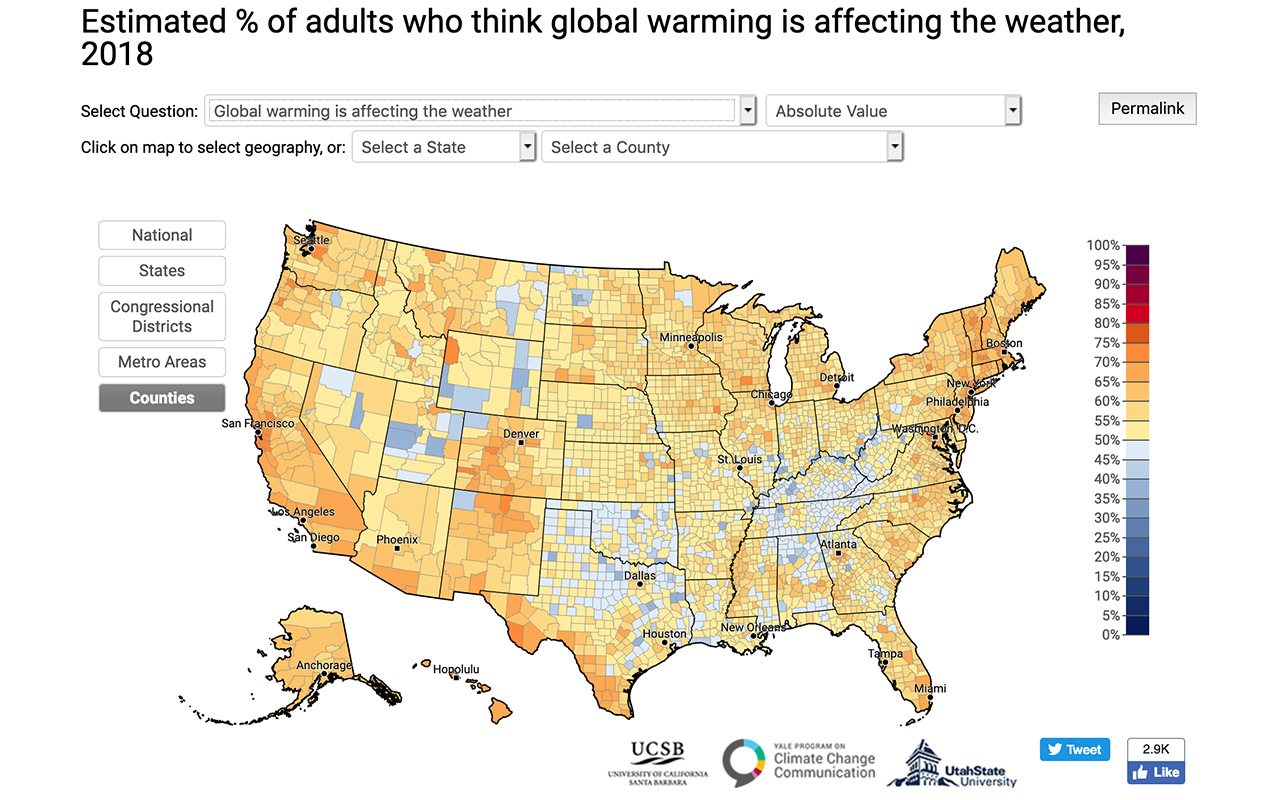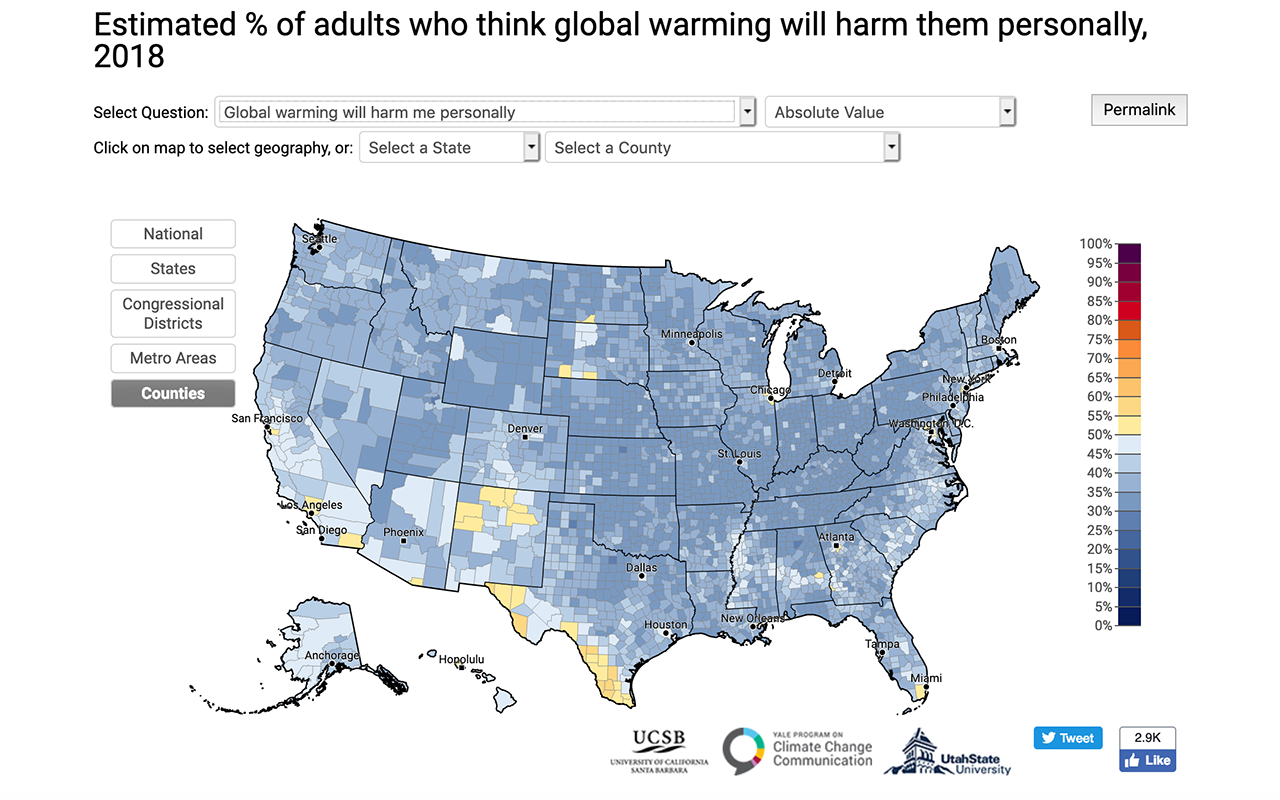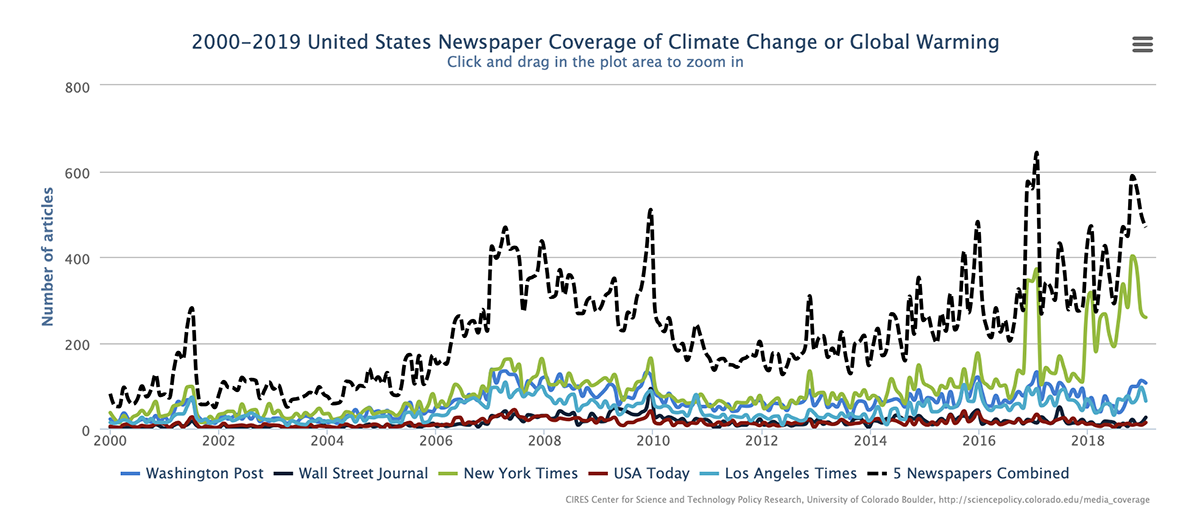By Ashley Moses, edited by Andrew S. Cale Each year, millions of scientific research papers are published. Virtually none of them can…
The climate is changing. Why does that matter to me and why should it matter to you?
This week, the Trump administration announced plans to create an ad hoc group of scientists to review the conclusion set forth in the National Climate Assessment (released in 2018) that the continued burning of fossil fuels is harming the planet. This represents the most aggressive attempt by this administration to undermine scientific consensus around climate change. In the wake of this announcement, we are thrilled to share this piece by Dr. Katharine Hayhoe, an accomplished climate scientist and one of the authors of the National Climate Assessment. Below, Dr. Hayhoe shares her story surrounding the release of the National Climate Assessment. —JMO
“The BBC is calling,” read the text message that woke me. It was 7:30am and normally I’d be doing the school run by then. But it was the first week in August, and we were on vacation at the lake.
“I guess I could talk to them,” I thought; and without stopping to boil the water for tea or to check the morning headlines – two big mistakes – I answered the phone. Within seconds I was live on the radio, with the interviewer asking, “was it you who leaked the latest draft of the federal climate report to the New York Times?” I couldn’t believe my ears. “What? No!” I responded, flabbergasted … and that began the most intense media day of my and many of my colleagues’ lives, a marathon of skyping into live interviews with everyone from CNN to CBC between fielding calls from co-authors and print media outlets.
Why such an outpouring of interest over a draft report that had already been released in its entirety for public comment that previous January? Because of the unavoidable discrepancy between the content of the report, which summarizes the state of the science on climate change, and the publicly-stated position of the current U.S. administration, on whose behalf this report was being prepared and released. In plain language, the Fourth U.S. National Climate Assessment (NCA4) Volume 1 states that climate is changing; humans are responsible; and the window of time to avoid serious and even dangerous impacts is closing fast. And so – from the authors who’d spend hundreds of unpaid hours working on it, to the federal employees who’d spent dozens of hours reviewing it, to everyone who knows how important accurate and up-to-date climate information is – many shared the same concern: would the administration even release the report?
Thanks to the so-called leak (the first version the Times posted was in fact the January draft, though they later updated it with a more recent version), the climate report received much more media attention than anticipated. And despite the fears some had expressed, Volume 1 was released right on schedule, in early November 2017. But those who hoped it would alter the administration’s public stance were disappointed. “The climate has changed and is always changing,” said White House spokesperson Raj Shah, even though Chapter 1 begins with the key message, “the global climate continues to change rapidly compared to the pace of the natural variations in climate that have occurred throughout Earth’s history,” and continues, “there are no convincing alternative explanations [for this warming, other than human causes] supported by the extent of the observational evidence.”
I wasn’t surprised. I’ve had thousands of conversations over the last decade with people who were dubious, skeptical, or even downright hostile to the idea that the climate is changing and humans are responsible. So I already knew that if someone is already not on board with climate science or is just disengaged and feels like it doesn’t matter, more information about ocean acidification or attribution of extreme weather events isn’t what’s going to change their minds. That’s because the most dangerous and pervasive myth that the largest number of people have bought into isn’t that climate isn’t changing (top figure), or that it’s just a natural cycle (middle figure). The problem is that we don’t think it matters to us (bottom figure). We see climate change as a distant issue, one that only impacts future generations or people or animals who live far away at the poles. And that is exactly what the second volume of the National Climate Assessment tackles head-on.



The above three images courtesy of http://climatecommunication.yale.edu/visualizations-data/ycom-us-2018/
After the furor around the release of Vol. 1 died down, we went straight back to work, because Vol. 2 was scheduled to be released next, in December 2018. Just as with Vol. 1, each chapter had to be thoroughly reviewed and approved by every relevant federal agency—twice. A special panel of experts was convened by the National Academy of Sciences to review the report as well. There was a public comment period, where anyone could submit their input. Authors were required to respond to each comment individually and our responses documented as a matter of public record. The traceable accounts – lengthy documents that explain the basis for every key message in the report, with exhaustive citations – had to be written and checked too.
While Vol. 1 summarizes the state of the science, including observed and future trends in physical climate indicators from Arctic sea ice to hurricanes and atmospheric rivers, Vol. 2 focuses firmly on the impacts: how is climate change affecting every region and each sector of the U.S., and how are we responding? Its more than 1,600 pages describe these impacts in detail.
Along the Northeast coast, for example, rising seas have increased the risk of nuisance or high tide flooding for many cities by a factor of 10 or more since the 1950s. In the Gulf Coast, climate change is increasing the amount of rainfall associated with hurricanes – by nearly 40 percent, in the case of Hurricane Harvey – as well as bringing stronger, bigger storms that intensify faster and move more slowly. Across the western U.S., climate change has nearly doubled the area burned by wildfires since the 1980s. In the Arctic, permafrost is thawing, affecting critical infrastructure from homes and buildings to roads and pipelines. On U.S. island territories, sea level rise threatens to inundate important sites from airports to historical monuments.
Natural systems are also being affected. Phenology – the timing of important biological events – is changing, as reflected in leaf and bloom dates, migration patterns, and allergy seasons. Warming winter temperatures are allowing invasive species, from fire ants to kudzu (Japanese arrowroot), to spread poleward. The geographic range for many species is shifting and, in locations constrained by geography or habitat fragmentation, shrinking. A meta-analysis published more than ten years ago found that, at that time already, over 26,500 physical and biological systems around the world that were responding to a warming planet. And both Vol. 1 and 2 are clear: the more carbon we produce, the more climate changes, and the more serious and even dangerous the impacts will become.
As the end of 2018 approached, some raised the same concerns again: would the administration approve the report for release? But there was every indication they would. By November 2018 all federal agencies had signed off on the final report, the website was being designed, the lead authors’ presentations at the Fall Meeting of the American Geophysical Union were scheduled. After Thanksgiving, we’d still have plenty of time to review the proofs and check the final figures before the scheduled December release.
The Monday before Thanksgiving, I was in full pie production mode. The counter was covered in apple peels and flour, and so were my hands. My phone chimed. Another message, this time from a colleague. “We’ve been told the report is to be released this Friday!” it said. “Sending proofs right away!”
I immediately reached for my laptop. With floury fingers, I opened the PDFs to see what I had to do and try to figure out how long it would take. The pies went straight into the freezer and the next 60 hours was a flat-out marathon for all of us, with emails and phone calls through the day and well into the night. I finished my own final checks in the car on the way to family Thanksgiving, and sent off my documents in the next pocket of phone coverage we found, driving through rural Virginia.
Thanks to the remarkable efforts of the U.S. Global Change Research Program staff and the lead authors, Vol. 2 was successfully released that Friday. Despite concerns that its release on one of the slowest news days of the year would bury it, the coverage was encouraging. It’s true, there wasn’t much other news that day; but the report also rode the wave of public interest spawned by the IPCC’s 1.5oC report released in October 2018, a wave that’s been amplified by one super-charged weather event after another, all year long.
As expected, many politicians and pundits pushed back. “The report was based on the “most extreme” scenario,” some claimed, despite the fact that it considered a broad range of scenarios, from a lower scenario where carbon emissions go negative before end-of-century to a higher one where they continue to grow. We were doing it for the money, others said, though we’d been paid zero dollars for our time. These and other comments are discouraging and frustrating; but at the same time, it is clear the tide is finally turning.
In this Twitter thread, I document and respond to many of the statements that were made.
The Fourth US National Climate Assessment was released on Friday. Since then, a number of politicians + pundits have made statements about it that are not accurate. As an author, I’m here to set the record straight. Here we go! (thread) https://t.co/4qV9ss3Tr3
— Katharine Hayhoe (@KHayhoe) November 27, 2018
Mentions of climate change in the media are up. It’s thanks to several factors: reports like NCA4 and the IPCC; the increasing risk of more intense heat waves, heavy downpours, hurricanes, wildfires and other extremes in a warming world; and even politicians’ attempts to dismiss the science, which spawn increasingly forceful rebuttals not just from the scientific community, but increasingly from experts in industry, national security, and more. When the Trump administration proposed rolling back clean car standards, for example, top leadership at Ford fired back. “We support increasing clean car standards through 2025 and are not asking for a rollback,”wrote Bill Ford, the company’s executive chairman, and Jim Hackett, Ford president and CEO. “In addition, at Ford, we believe we must deliver on CO2reductions consistent with the Paris Climate Accord.“ And this January, the Yale Program published their latest survey results, finding a record number of Americans, 59 percent, are either alarmed or concerned about climate change. “What that basically indicates is that Americans are increasingly understanding that climate change is here and now,” said Tony Leiserowitz, the program director.

Image courtesy of https://sciencepolicy.colorado.edu/icecaps/research/media_coverage/usa/index.html
Despite rising levels of concern, however, political polarization continues to deepen. For years now, the best predictor of whether we agree with the simple facts on climate isn’t how much we know about the science, or how smart we are; it’s simply where we fall on the political spectrum. So it’s no surprise that, just this week, we learned that the White House is planning to create a National Security Council committee to question the findings of recent federal climate science reports … in other words, the National Climate Assessment and the accompanying State of the Carbon Cycle report, which lays out the economic argument for meeting the goals of the Paris Agreement. This appears to be yet another attempt at a partisan red team assessment of climate science, even though one might argue that the “red team” documents already exist: they are the very reports this administration approved and released!
But a thermometer doesn’t give us a different answer depending on how we vote. And just as gravity and evolution don’t cease to exist whether we “believe” in them or not, so too sea level does not rise or fall depending on whether a state goes blue or red. The truth is this: Climate is changing. Humans are responsible. The impacts are here today. Our choices matter; there isn’t any more time to waste.
To care about a changing climate, we don’t have to be a scientist or an environmentalist or a liberal political activist. We just have to be a human who wants this planet, the only one we have, to be a safe home for all of us.
Edited by Jason Organ, PhD, Indiana University School of Medicine.
Want to stay connected with #SciCommPLOS or pitch an idea for a blog post? Tweet us at @SciCommPLOS or email us at scicommplos@gmail.com.

How can we help the planet? can the sun stop shinning? If it does stop shinning what should we expect?
[…] — Read on blogs.plos.org/scicomm/2019/03/01/the-climate-is-changing-why-does-that-matter-to-me-and-why-should-… […]
Dr. Hayhoe, I so appreciate how hard you work all the time to bring truth to the forefront on climate change. You could be just enjoying your pies, but you just jump in to try & keep those in the media from distorting the analysis in the 4th National Assesment.
I was glad you made clear: the more carbon we produce, the more climate changes, and the more serious and even dangerous the impacts will become.
I think the best first step we need to take is enacting the Energy Innovation and Carbon Dividend Act. It will cut emissions by 40% in the first dozen years and move other countries to join a robust and ambitious path to de-carbonization.
I hope you enjoyed March 14th.